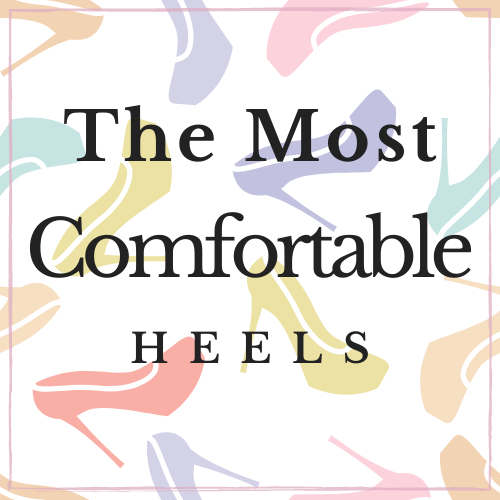Do’s and Don’ts of Wearing Heels as a Plus-Size Woman
If you are a plus size babe you know the struggle isn’t just about finding heels that look good, but ones that actually support your body and let you do you without the pain. I’ve been in this game for years, and trust me, the tips you’ll read here are not your average “just wear wedges” advice. Let’s get down to the nitty-gritty, shall we?
✓ Invest in Sturdier Heels with Structural Support ✓
The first thing you should look for? Shoes that aren’t just pretty but are engineered to handle weight distribution. Look for heels with a reinforced shank (the supportive piece under the arch). A strong shank reduces pressure on your arches and helps stabilize your entire posture—no more wobbles!
Pro Tip: Brands like Ally Shoes and Sole Bliss are known for designing heels with comfort and durability in mind. I recently tried Ally Shoes' boots, and let me tell you—they have a super spacious calf width and are incredibly comfortable, even for all-day wear. No pinching, no pain, just pure style and support!
USE THESE COUPON CODES FOR ALLY SHOES:
VS40HEELS: $40 off your first pair of heels
VS10FLATS: 10% off your first pair of flats
✓ Prioritize a Wider Toe Box ✓
A wider toe box not only prevents bunions and nerve pain in the ball of the foot, but it also keeps your toes relaxed and happy.
Try This: Look for heels with rounded or almond-shaped toes instead of pointed ones—they’re way more forgiving and still chic.
✓ Choose Cushioned Insoles Made for High Impact ✓
Your feet absorb more pressure with every step, so extra cushioning isn’t a luxury, it’s a necessity. Insoles can help reduce shock, especially under the ball of the foot (a common pain point).
✓ Practice Your Core Strength ✓
This might sound like a fitness tip, but hear me out. Strengthening your feet, body and core can improve your balance and stability when wearing heels. When your core is strong, your gait improves, and your knees and ankles experience less strain.
Pro Tip: Check out my course High Heel Therapy to learn how to use foot and body exercises to get used to wearing heels.
✓ Opt for Adjustable Straps ✓
Feet swell, it’s a fact, especially after standing or walking for long hours. Adjustable straps let you customize the fit of your heels throughout the day, keeping them comfortable and supportive.
Pro Tip: Avoid elastic-only straps, as they can dig into your skin and lose elasticity over time. Go for thick strap options.
What Not to Do When Wearing Heels as a Plus-Size Babe
Now, let’s talk about the high heel Dont’s to avoid. Some heels just aren’t worth the pain or risk. The wrong choices can leave you feeling uncomfortable, unsteady, or worse—dealing with long-term foot issues. But don’t worry, I’ve got your back! Here are the don’ts to keep in mind, so you can skip the struggles and keep slaying in your heels.
✗ Avoid Ultra-Thin Stilettos ✗
I know they’re tempting, but stilettos with no base support are a no-go. They increase instability and put more strain on your knees and lower back. Over time, this can lead to joint pain or even issues like pain behind the kneecap.
Pro Tip: If you love the stiletto look, choose a thicker heel at least 1.5 inches wide for better balance.
✗ Don’t Ignore Ankle Support ✗
Ankles do a lot of heavy lifting, especially when you’re in heels. Shoes without proper ankle support increase your risk of rolling your ankle and can strain your Achilles tendon.
Avoid This: Mules or backless heels for long wear—they make your feet work overtime just to stay in place.
✗ Say No to Hard, Unforgiving Materials ✗
Synthetic materials with no stretch or flexibility can cause blisters, pinching, and even bruising. Plus-size feet often need a little extra give, so don’t settle for anything that feels rigid.
Quick Check: If you can’t press the material slightly with your thumb, it’s likely too stiff to be comfortable.
✗ Avoid Heels Without Shock Absorption ✗
Hard soles are the enemy of happy feet. Without shock absorption, every step sends vibrations up your legs, which can lead to fatigue and pain in your joints.
Pro Tip: Test your shoes by gently tapping the sole on a hard surface. If it feels like hitting a rock, add a padded insole or keep shopping.
✗ Don’t Skip the Post-Wear Recovery ✗
We often focus on how heels feel while we’re wearing them, but post-wear care is just as important. Ignoring recovery can lead to chronic foot issues like plantar fasciitis or tendonitis.
Do This: After a long day in heels, soak your feet in warm water with Epsom salt and stretch your calves to release tension. Your feet will thank you!
Final Thoughts
Heels don’t have to be painful, no matter your size. With the right fit, materials, and recovery, you can wear them confidently and comfortably. Remember, it’s not about squeezing into what doesn’t work for you. It’s about finding heels that celebrate your unique beauty and strength.


